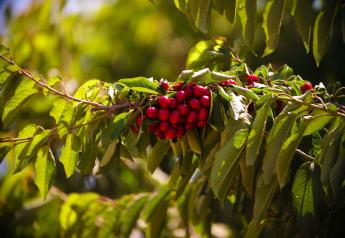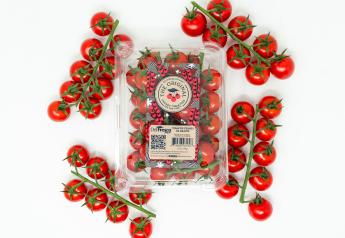Mechanization not an option for fresh cherries
California cherry growers are hopeful that they’ll find enough workers to pick and pack their crops this year.
“We’re a little nervous,” said Jeff Colombini, president of Lodi Farming, Lodi, Calif., as he prepared for the coming season.
Last year’s crop was not as large as this one, he said, so ample labor was available.
With a larger crop this season, recruiting enough labor “is definitely a concern,” he said.
It’s getting increasingly difficult to find a good supply of laborers, agreed Roger Pepperl, marketing director for Stemilt Growers LLC, Wenatchee, Wash.
“Labor is always going to be an issue, and it’s something we’re going to have to manage going forward,” he said.
Stemilt relies on the federal H-2A agriculture guest worker program and other programs to secure labor, he said.
The amount of labor, cost of labor and quality of labor are three main concerns California cherry growers face, said Rich Sambado, sales manager for Primavera Marketing Inc., Linden, Calif.
The company won’t be sure it has enough labor this year until the crop load can be determined, he said.
Growers of some other commodities — like apples, asparagus and strawberries — now have or are testing mechanical devices that can harvest their crops and help growers enjoy significant reductions in labor costs.
That’s not an option for fresh-market cherry growers — at least not yet.
However, most major shippers have put a dent in labor needs by installing optical sizers.
Lodi, Calif.-based M&R Co., for example, has been able to reduce the number of workers needed in the packing shed from 200 to 40 or 50, said Bruce Hinchman, sales manager.
The industry is spending millions of dollars on labor-saving machines, he said.
So far, no machine has been developed that can pick cherries for the fresh market.
Just about all processed cherries are harvested using “tree shakers,” like a $250,000 harvester manufactured by Coe Orchard Equipment, Live Oak, Calif.
That machine can harvest 15 to 20 acres a day, said owner Matt Coe.
But he said he never has seen the machine used for fresh cherries, probably because cherry growers have a negative view of mechanical harvesting for fresh product.
“I think it’s something the fresh-picked industry probably never has looked at,” he said.
The biggest drawback seems to be that tree-shakers cause the stems to become separated from the cherries.
“If they can live without the stems, we can certainly harvest them without doing them damage,” said Don Mayo, owner, president and CEO of Orchard Machinery Corp., Yuba City, Calif.
“A 50% to 60% stem count is about the best we can do,” he said.
A solution might be some kind of loosening agent, but he said that’s not likely to happen.
“The cherry market is so small, I don’t see a major chemical company putting out the amount of funds it would take to get something like that approved by the Food and Drug Administration,” he said.
Another drawback for older groves is the makeup of the grove itself.
If a grove has “old standard trees with monster trunks and very poor tree structure, that’s not going to work.” Mayo said.
Using mechanical harvesters would result in a “huge” labor savings, he said.
Orchard Machinery’s $200,000 Catchall VII harvester can pick two to three trees a minute with a crew of three, he said.
Keith Wilson, owner of King Fresh Produce LLC, Dinuba, Calif., said he would be interested in a mechanical harvester that works for fresh-market cherries.
“It’s something to be looked at because labor is so expensive,” he said.
Colombini said he, too, would like to see such a harvester.
“If we could harvest the crop with less labor and still produce a high-quality, marketable cherry that’s not bruised, I’m definitely in favor of it,” he said.
But the stem issue seems to be a deal-breaker.
“A cherry stem is still important to the image of a cherry,” Hinchman said. “I don’t see stemless cherries catching on.”
“People want stems on their cherries,” agreed Pepperl. “We think it’s a hand-picked market.”
There’s always a possibility that mechanical harvesting might work for fresh-market cherries, Coe said. “Someone’s got to be willing to try it and see what the outcome is.”







